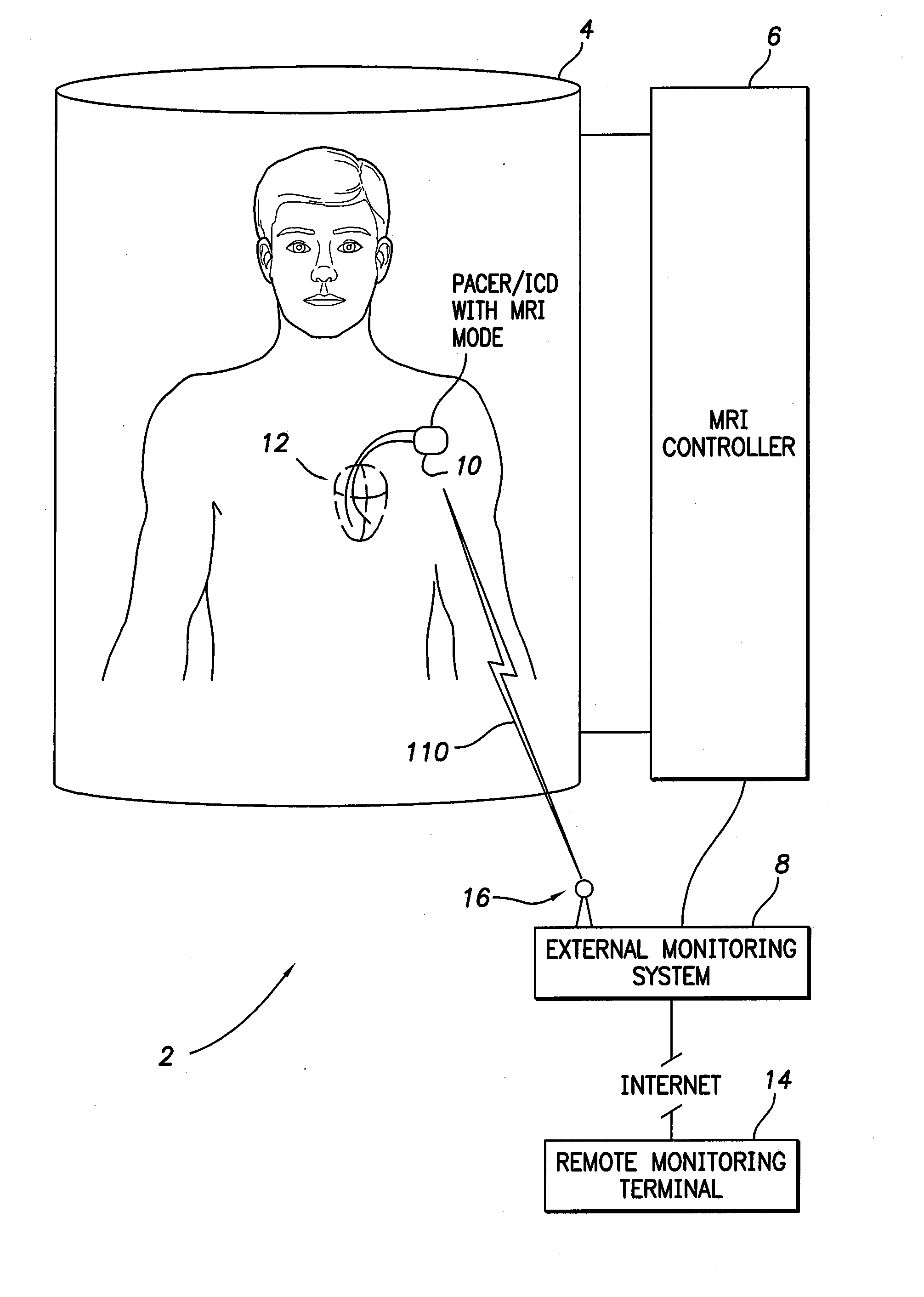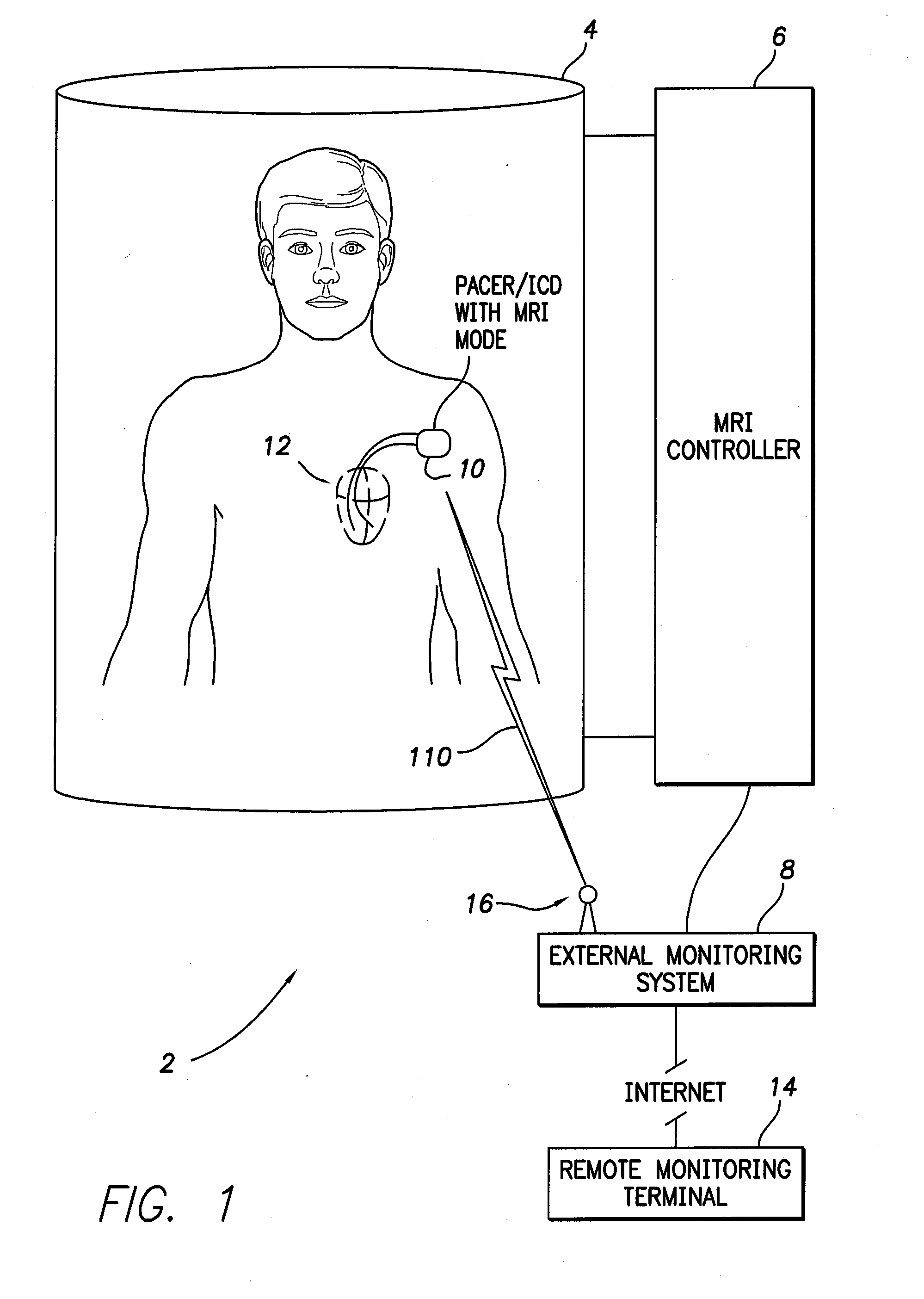Systems and methods for remote monitoring of signals sensed by an implantable medical device during an MRI
a medical device and signal technology, applied in the field of implantable medical devices, can solve the problems of interference with the operation of any medical device, joule heating, inappropriate sensing and pacing, etc., and achieve the effect of reducing the influence of mri fields
- Summary
- Abstract
- Description
- Claims
- Application Information
AI Technical Summary
Benefits of technology
Problems solved by technology
Method used
Image
Examples
Embodiment Construction
[0031]The following description includes the best mode presently contemplated for practicing the invention. The description is not to be taken in a limiting sense but is made merely to describe general principles of the invention. The scope of the invention should be ascertained with reference to the issued claims. In the description of the invention that follows, like numerals or reference designators will be used to refer to like parts or elements throughout.
Overview of MRI-Responsive Systems and Procedures
[0032]FIG. 1 illustrates an overall MRI system 2 having an MRI machine 4 operative to generate MRI fields during an MRI procedure for examining a patient. The MRI machine operates under the control of an MRI controller 6, which controls the strength and orientation of the fields generated by the MRI machine and derives images of portions of the patient therefrom, in accordance with otherwise conventional techniques. MRI machines and imaging techniques are well known and will not...
PUM
 Login to View More
Login to View More Abstract
Description
Claims
Application Information
 Login to View More
Login to View More - R&D
- Intellectual Property
- Life Sciences
- Materials
- Tech Scout
- Unparalleled Data Quality
- Higher Quality Content
- 60% Fewer Hallucinations
Browse by: Latest US Patents, China's latest patents, Technical Efficacy Thesaurus, Application Domain, Technology Topic, Popular Technical Reports.
© 2025 PatSnap. All rights reserved.Legal|Privacy policy|Modern Slavery Act Transparency Statement|Sitemap|About US| Contact US: help@patsnap.com



